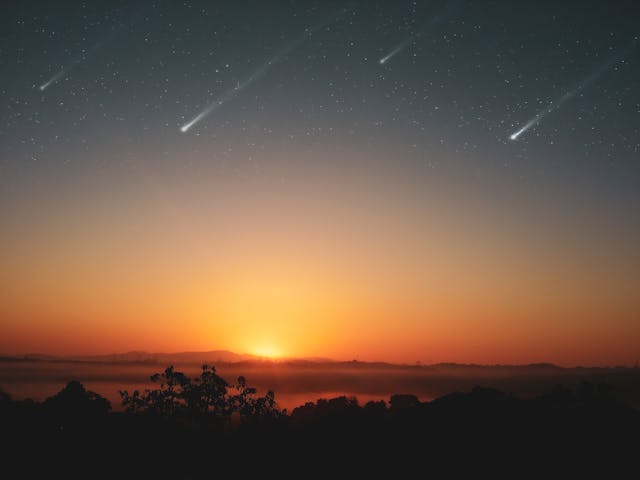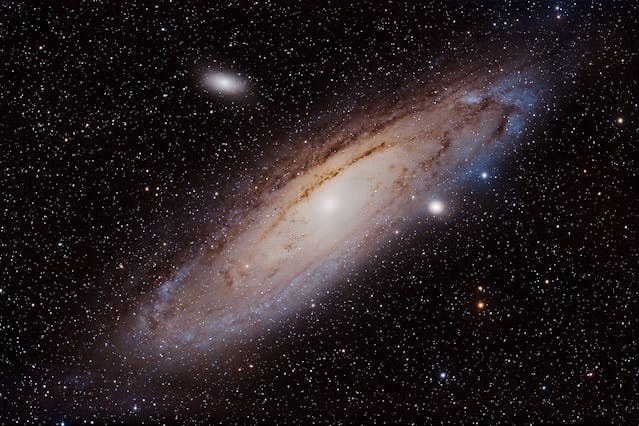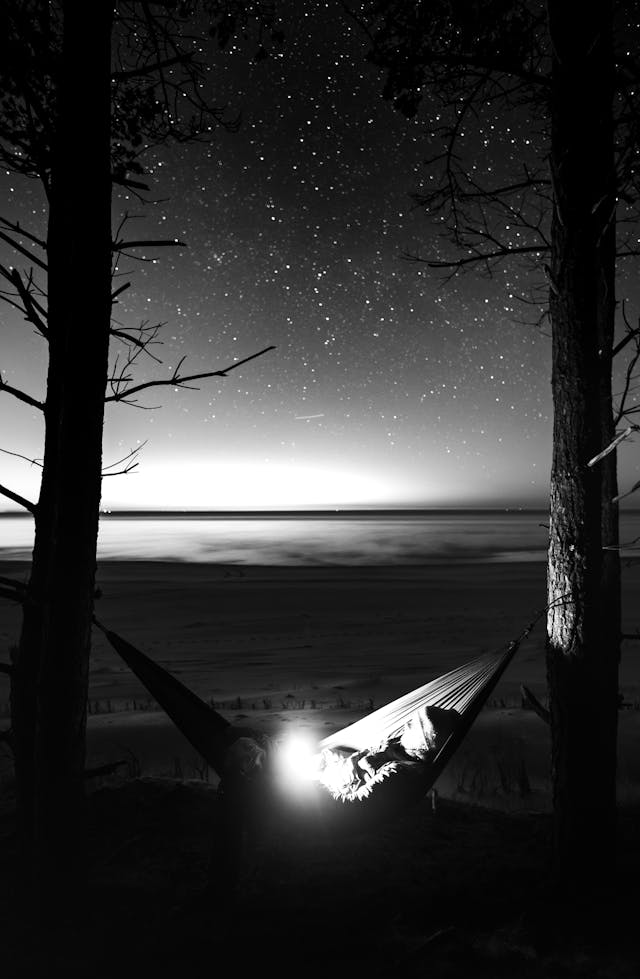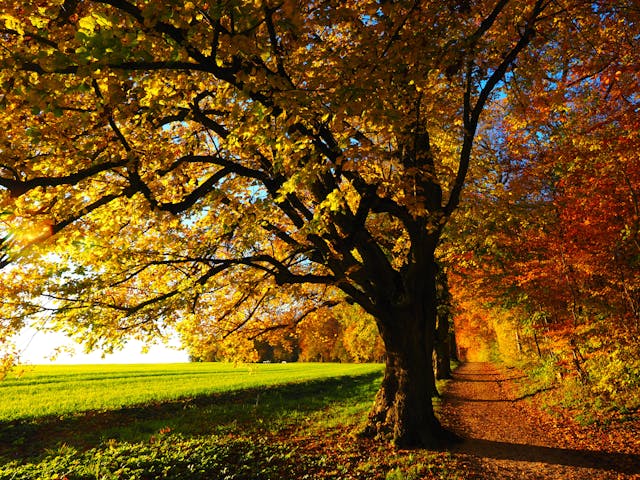Autumn is a magical time for astronomy enthusiasts. As the nights grow longer and the air becomes crisper, the sky reveals a tapestry of celestial wonders. Whether you’re a seasoned stargazer or a curious beginner, autumn offers a perfect opportunity to explore the night sky. Let’s dive into the enchanting world of autumn astronomy, where meteor showers dazzle, constellations tell ancient stories, and galaxies beckon from afar.
A Brief Introduction to Astronomy and Constellations
Astronomy is the scientific study of celestial objects, space, and the universe as a whole. It encompasses the observation and analysis of stars, planets, galaxies, and other astronomical phenomena. Constellations, on the other hand, are patterns of stars that have been identified and named by various cultures throughout history. These star patterns often represent mythological figures, animals, or objects and serve as a way to navigate the night sky.

The Beauty of Autumn Nights
As autumn unfolds, the night sky becomes a canvas painted with stars, planets, and other celestial wonders. The cooler temperatures and longer nights create ideal conditions for stargazing. Here are some highlights to look forward to:
- Meteor Showers: One of the most exciting events in the autumn night sky is the Orionid meteor shower. This annual meteor shower peaks around October 21st and is known for its bright and fast meteors. The Orionids are remnants of Halley’s Comet, and during the peak, you can expect to see up to 20 meteors per hour (above image).
- Prominent Constellations: Autumn is a fantastic time to observe some of the most iconic constellations. Pegasus, the winged horse, and Andromeda, the princess, take centre stage. The Andromeda Galaxy, our closest spiral galaxy neighbour, is visible to the naked eye on clear nights. It’s a breath-taking sight that reminds us of the vastness of the universe.
- Planetary Views: Autumn also offers excellent views of planets. Jupiter and Saturn are often visible in the evening sky, shining brightly and easily distinguishable from stars. With a telescope, you can even see the rings of Saturn and the moons of Jupiter.
Meteor Showers: Nature’s Fireworks
Meteor showers are one of the most thrilling spectacles in the night sky. These showers occur when Earth passes through the debris left behind by comets. As these tiny particles enter our atmosphere, they burn up, creating streaks of light known as meteors.
- Orionids: The Orionid meteor shower is named after the constellation Orion, from which the meteors appear to radiate. This shower is active from October 2nd to November 7th, with the peak occurring around October 21st. The best time to view the Orionids is after midnight, when the radiant point is high in the sky.
- Taurids: Another notable meteor shower in autumn is the Taurids. This shower has two branches, the Southern Taurids and the Northern Taurids, which peak in late October and early November, respectively. The Taurids are known for their slow-moving fireballs, which can be quite spectacular.

Constellations: Stories Written in the Stars
Constellations have fascinated humans for millennia. They serve as celestial markers, helping us navigate the night sky and telling stories of gods, heroes, and mythical creatures. Here are some prominent autumn constellations:
- Pegasus: Pegasus, the winged horse, is one of the most recognizable constellations in the autumn sky. Its most notable feature is the Great Square of Pegasus, a large asterism that forms the body of the horse. Pegasus is home to several interesting deep-sky objects, including the globular cluster M15 and the spiral galaxy NGC 7331.
- Andromeda: Andromeda, named after the princess in Greek mythology, is best known for the Andromeda Galaxy (M31). This galaxy is the closest spiral galaxy to the Milky Way and is visible to the naked eye as a faint, fuzzy patch of light. With binoculars or a small telescope, you can see even more detail (above image).
- Cassiopeia: Cassiopeia is easily recognizable by its distinctive “W” shape. This constellation is rich in deep-sky objects, including the open clusters M52 and M103, the Owl Cluster (NGC 457), and the Heart and Soul Nebulae. Cassiopeia is also home to the famous supernova remnant, Cassiopeia A.
- Perseus: Perseus, named after the Greek hero, is home to the famous variable star Algol, also known as the Demon Star. This constellation also contains the Double Cluster, a pair of open star clusters that are a stunning sight through binoculars or a telescope.
The Andromeda Galaxy: A Neighbour in the Cosmos
The Andromeda Galaxy, also known as M31, is a spiral galaxy located about 2.5 million light-years from Earth. It is the closest spiral galaxy to the Milky Way and is on a collision course with our galaxy, expected to merge with it in about 4.5 billion years. On clear autumn nights, the Andromeda Galaxy is visible to the naked eye as a faint, elongated smudge of light. With binoculars or a telescope, you can see its bright core and spiral arms.

Tips for Autumn Stargazing
To make the most of your autumn stargazing experience, here are some tips:
- Find a Dark Sky Location: Light pollution can significantly impact your ability to see celestial objects. Try to find a location away from city lights for the best views.
- Check the Weather: Clear skies are essential for stargazing. Check the weather forecast before heading out to ensure optimal conditions.
- Dress Warmly: Autumn nights can be chilly, so dress in layers to stay warm and comfortable.
- Bring Binoculars or a Telescope: While many celestial objects are visible to the naked eye, binoculars or a telescope can enhance your viewing experience.
- Use a Star Chart or App: A star chart or astronomy app can help you identify constellations, planets, and other celestial objects.
- Be Patient: Stargazing requires patience. Take your time to let your eyes adjust to the darkness and enjoy the beauty of the night sky.

Conclusion
Autumn is a season of transformation, where nature’s cycles are on full display. It’s also a time to look up and marvel at the wonders of the universe. Whether you’re watching a meteor shower, identifying constellations, or observing distant galaxies, autumn offers a wealth of celestial treasures. So, grab a blanket, find a cozy spot under the stars, and let the magic of autumn astronomy captivate your imagination.
Happy stargazing! & Love Life x
References:
https://www.constellation-guide.com/seasonal-constellations/autumn-constellation
https://www.skyatnightmagazine.com/advice/skills/autumn-astronomy-best-night-sky-targets

